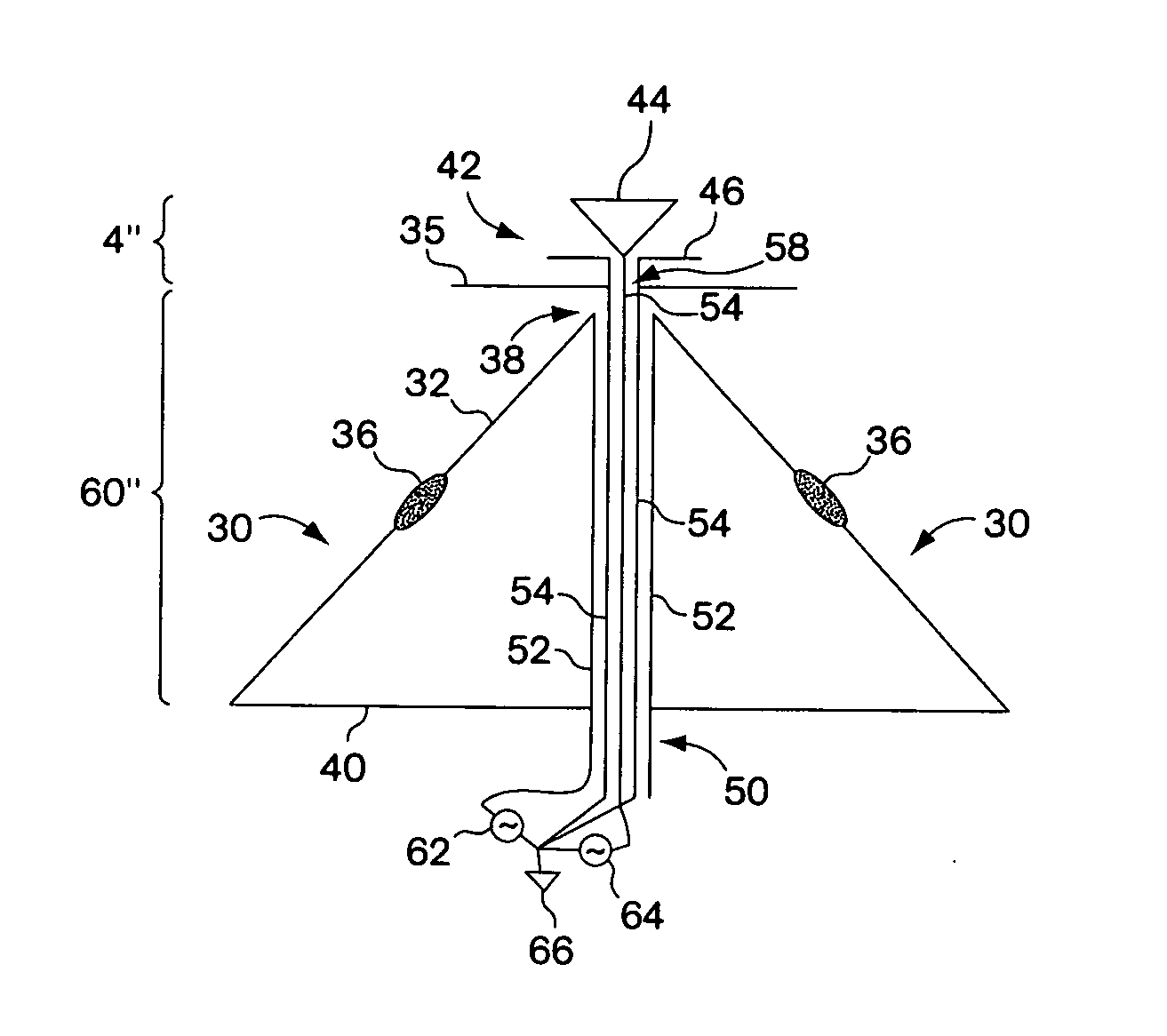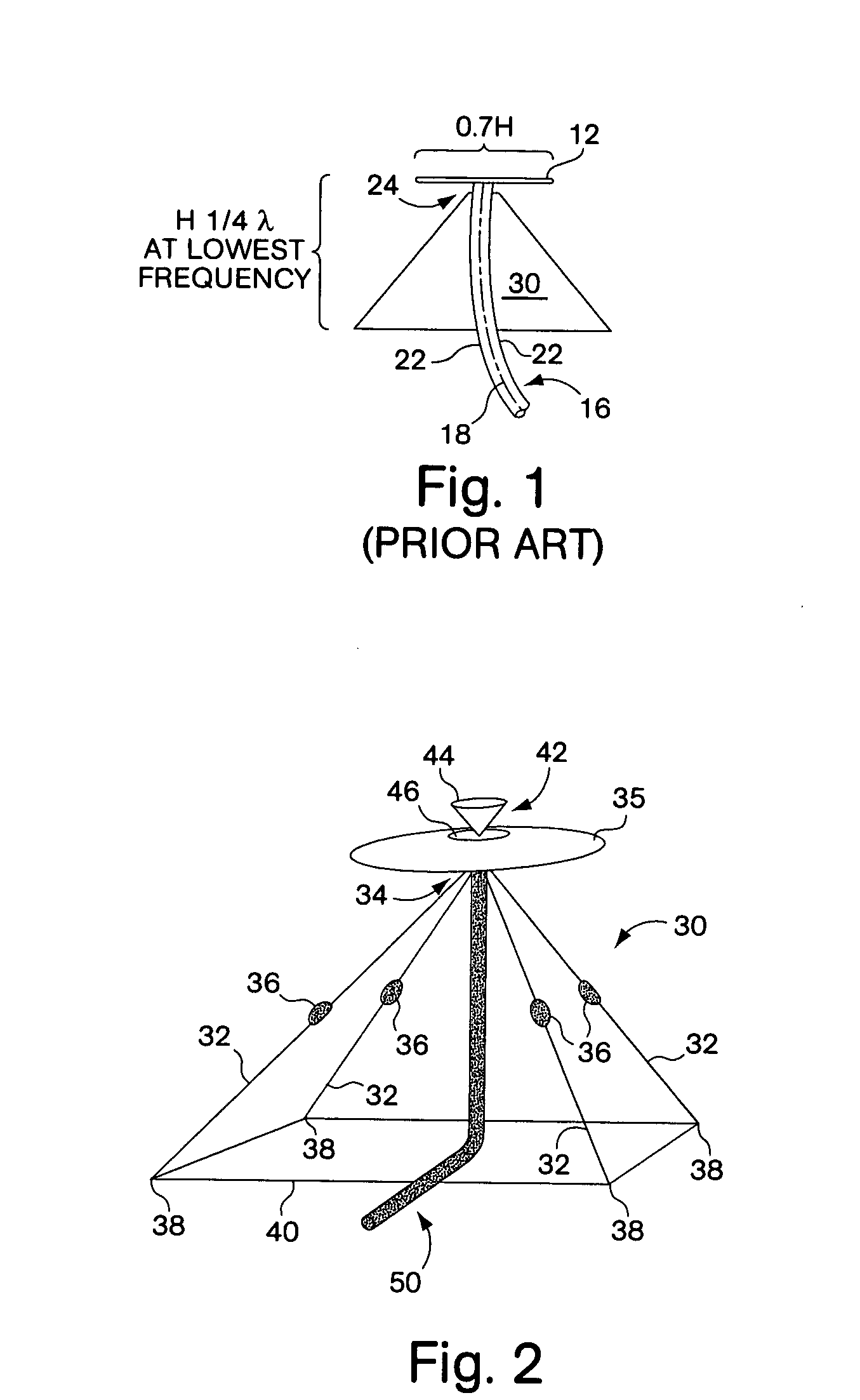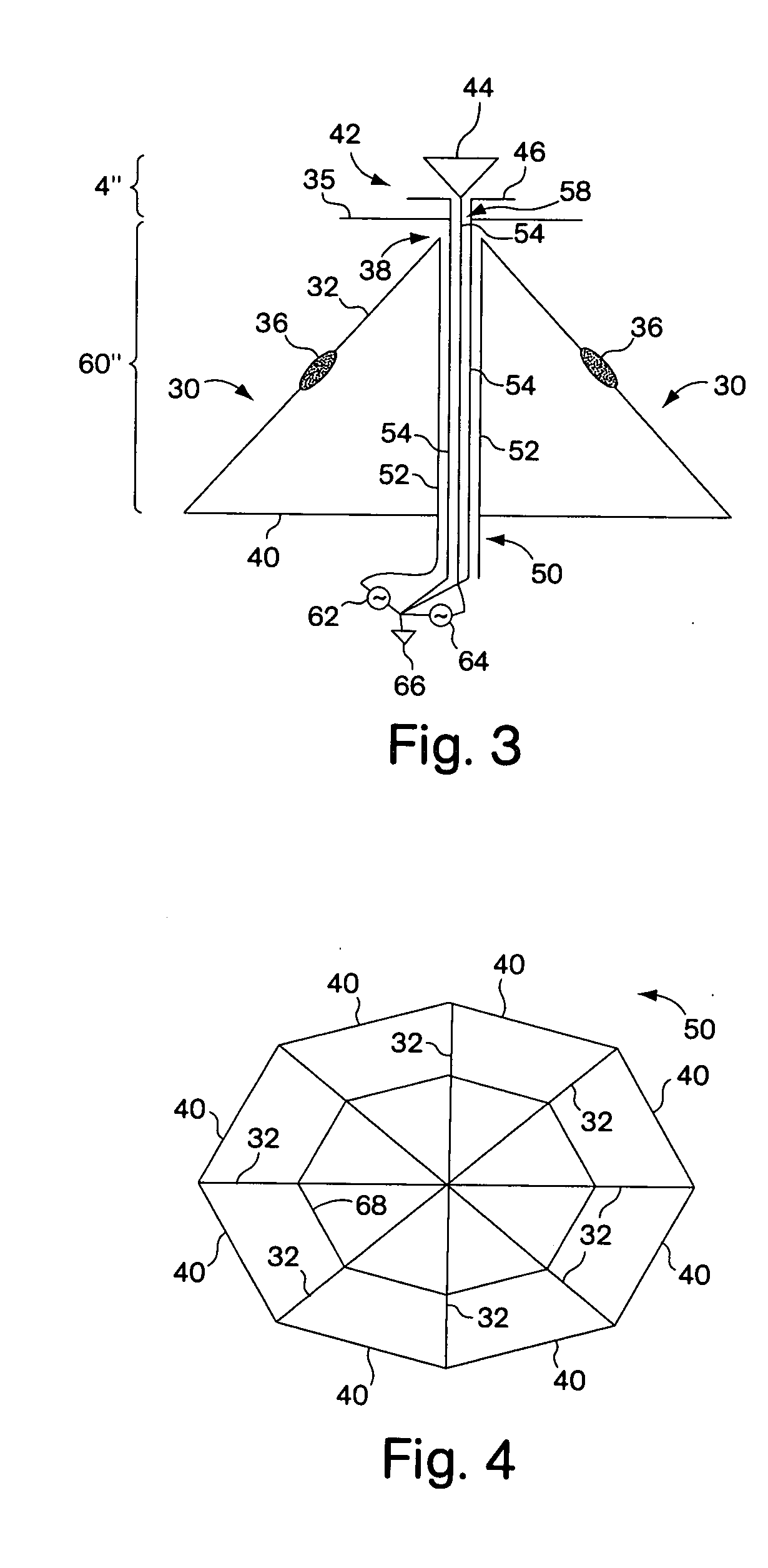Collapsible wide band width discone antenna
a discone antenna and wide band technology, applied in the field of discone antennas, can solve the problems of difficult deployment of base stations in battlefield scenarios and inability to be easily portable, and achieve the effects of reducing the overall dimension of the antenna, eliminating performance degradation, and reducing the low frequency cutoff of the antenna
- Summary
- Abstract
- Description
- Claims
- Application Information
AI Technical Summary
Benefits of technology
Problems solved by technology
Method used
Image
Examples
Embodiment Construction
[0038] Referring now to FIG. 1, a typical prior art discone antenna includes a cone 10 and a circular disc 12 positioned above the cone's feed point 14. The antenna is typically fed with a coaxial cable 16 such that the center conductor 18 of the coaxial cable is coupled at the midpoint 20 of the circular disc. The outer braid of the coaxial cable here illustrated at 22 is electrically coupled to an aperture 24 in the apex of the cone to complete the antenna.
[0039] Typically, the height of the antenna is a quarter wavelength at the lowest frequency of the antenna, whereas the diameter of the disc is 0.7H, with H being the height of the cone.
[0040] The discone antenna was invented during World War II to be a wide band antenna whose antenna pattern did not vary significantly with frequency and is a relatively small antenna because it is only a quarter wavelength high. It will be appreciated that the advantage at the time was to be able to have a wide-band antenna whose height was on...
PUM
 Login to View More
Login to View More Abstract
Description
Claims
Application Information
 Login to View More
Login to View More - R&D
- Intellectual Property
- Life Sciences
- Materials
- Tech Scout
- Unparalleled Data Quality
- Higher Quality Content
- 60% Fewer Hallucinations
Browse by: Latest US Patents, China's latest patents, Technical Efficacy Thesaurus, Application Domain, Technology Topic, Popular Technical Reports.
© 2025 PatSnap. All rights reserved.Legal|Privacy policy|Modern Slavery Act Transparency Statement|Sitemap|About US| Contact US: help@patsnap.com



